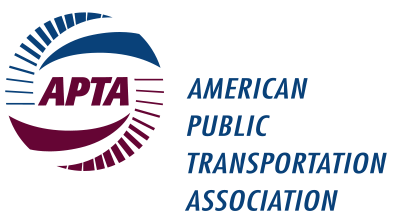
By American Public Transportation Association
Nov 8, 2021 Updated Nov 9, 2021
ORLANDO, FLa., Nov. 8, 2021 /PRNewswire/ -- This week in Orlando, leaders from all areas of the public transportation industry converged at the American Public Transportation Association's (APTA) TRANSform & EXPO Conference to explore the technologies and trends that will shape the future of the industry. After four long years, members of the public transportation industry are eager to gather and share lessons learned as well as learn about technological progress made from the more than 700 attending exhibitors. Public transportation is an $80 billion industry at the forefront of many exciting innovations including zero emissions vehicles, autonomous vehicles, contactless information and fare collection, as well as surveillance and safety improvements.
"COVID-19 didn't just bring with it new challenges - it accelerated trends that were already underway. The good news is that the innovations we saw emerging before COVID-19 helped us prepare for this past year – and what is still to come," said APTA President and CEO Paul P. Skoutelas. "The nation needs to move, and we need to act. Many major challenges facing our nation have a mobility component. Public transportation is the essential element for progress on all these issues."
As the nation recovers from the global pandemic, the industry continues to respond to the needs of its passengers and the value of this industry has never been more evident. With 87 percent of trips directly benefiting local economies, public transit builds communities and directly employs more than 448,000 people. As such, long-term dedicated federal investment in public transportation is critical to our nation's future global competitiveness, and with each $1 billion invested supporting 50,000 jobs.
"Our industry is extensive and complex, bringing together innovation and new technologies in ways that lead to advancing public transportation for the betterment of our nation," said Jeff Nelson, APTA Chair and CEO/Managing Director, Rock Island County Metropolitan Mass Transit District (MetroLINK), Moline, IL. "Public transportation moves people and shapes the future of our communities."
The improvement of public transportation is one of the most important actions a nation can do to meet the climate and mobility demands of its cities and communities. In the United States, transportation represents 29% of greenhouse gas emissions. However, public transportation saves 63 million metric tons of carbon dioxide (CO2) annually to significantly reduce greenhouse gas emissions and improve air quality. Public transportation is leading the way in the use of alternative-powered vehicles to improve fuel economy incorporating dual-powered, electric and hybrid vehicles into fleets. In fact, existing and future fleet electrification commitments by transit agencies could lead to 75% of transit buses being zero-emission by 2040.
Technology is also rapidly advancing the way public transit agencies operate and support passenger needs, including swift and continuous exchanges of information, safety innovations and increased operational efficiencies. For example, the rise of contactless technology has opened new options in fare collection, proximity readers and counters as well. In terms of increasing safety and security, advances in air filtration technology to software-enhanced surveillance systems with predictive analytics, technology in public transportation works hard even out of view as public transportation provides a vital link between residents and their communities.
APTA's TRANSform & EXPO, hosted in Orlando, offers the diverse public transportation industry the opportunity to showcase these and a wide array of other technologies and practices that can greatly enhance the passenger experience, streamline system management, improve safety, and increase sustainability. For manufacturers and suppliers, the event is a one-stop shop to interact with transit agencies, policy makers, and regulators to preview and explore the future innovations, and for the world it is a sneak peek at possibilities in public transit.
ABOUT APTA'S TRANSform Conference
The 2021 TRANSform Conference, formerly known as APTA's Annual Meeting, is a premier public transportation industry event, which includes educational sessions, technical tours, and forums on a wide range of topics including federal funding, public-private partnerships, technology, sustainability, safety, workforce development, and mobility.
https://www.wfmz.com/news/pr_newswire/pr_newswire_stocks/public-transportation-serving-crucial-role-in-nations-recovery/article_8aab1fbf-8941-5e4c-b3a6-1fd813fea647.html

